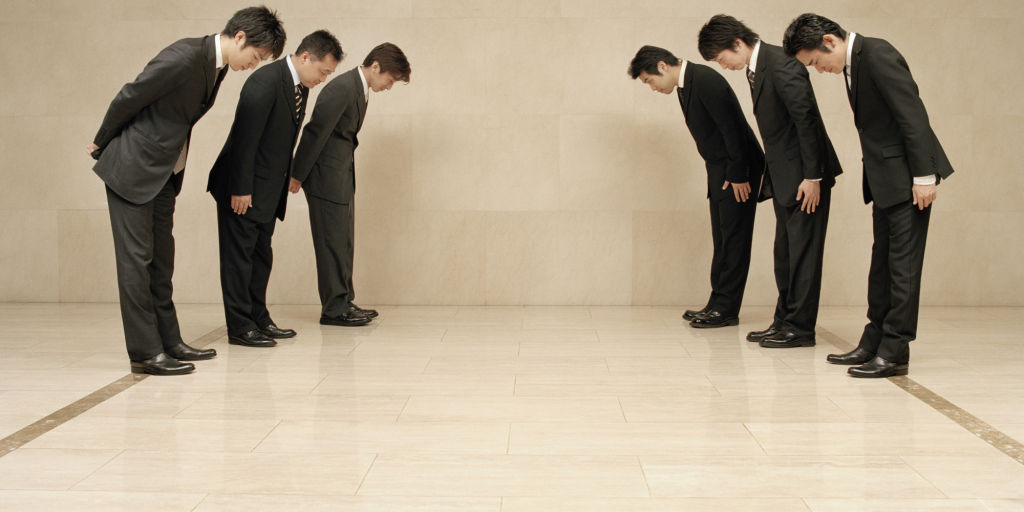Bowing in Japanese culture is a very important part of understanding Japanese society. The Japanese do not greet each other with a handshake, but rather bow. Japanese bowing indicates a number of different information to the observer. A bow can show others how much respect each other is showing to the other, the rank or status in society each other hold, or perhaps how sorry each other are for some mistake they have made.
A bow can range from a small nod of the head to a deep bend at the waist. A deeper, longer bow indicates respect and a small nod with the head is casual and informal.
Bowing with your palms together at chest level is not customary in Japan.
If the greeting takes place on a tatami floor, people get on their knees to bow. Bowing is also used to thank, apologize, make a request or ask someone a favor.
Japanese Bowing is widely used in tandem with greetings like “ohayo gozaimasu” (good morning) and “konnichi wa” (hello, good afternoon) as well as words of gratitude or apology.
Japanese Bowing
Japanese bowing is so deeply ingrained in culture and society that it’s not something people really think too much about. If you’re a foreigner, you’re probably not going to be expected to bow all the time, though that depends on the person. There are, however, so many different ways one can and should bow, depending on the situation and the video below should clear this up for you.
90% of the time however Japanese bows are incredibly casual and small, even getting down to small nods of the head.
The meaning of a bow depends on the situation, depth, and length of time you hold your bow. Bowing in Japan shows respect for the person or thing you’re bowing to. Your rank or social standing in Japanese is really important. If you’re higher up in society from another person, you’ll notice that they talk more politely to you, bow more deeply, and even perhaps order the same food as you at a restaurant.
Bows are only one of the many ways you can show respect and humble yourself in front of another person. Depending on who you’re bowing to, you can bow more deeply, bow longer, or even, perhaps, not bow at all. Beyond humbling yourself, it seems like you can bow for almost any other reason at all. You can bow to greet people, say thank you, say you’re sorry, when you’re congratulating someone, and more.


2 comments
Whyyuuuuuuuuuyyyyyyyyyyyyyyyyyyuuuuuiiiiiiiiiiiuuuuuu
Hey very nice website!! Man .. Beautiful .. Amazing .. I’ll bookmark your website and take the feeds alsoI’m happy to find numerous useful information here in the post, we need work out more techniques in this regard, thanks for sharing. . . . . . cecfckaddeekfdee